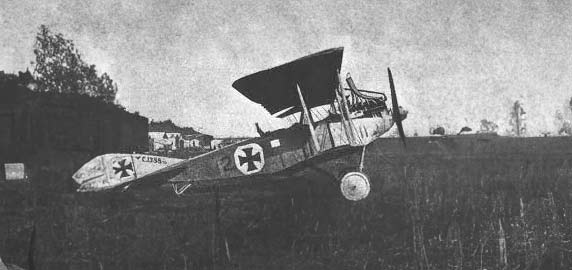The Albatros C.III, a pivotal WWI German reconnaissance biplane, known for its robust design and superior flight characteristics, revolutionized aerial warfare tactics.
The Albatros C.III was a critical German reconnaissance biplane of World War I, renowned for its reliability and versatile performance. This article explores the aircraft’s historical development, design, performance, and military use, showcasing its pivotal role in early aviation warfare. The Albatros C.III, developed during World War I, marked a significant advancement in military aviation, combining robust design with versatile capabilities. It played a pivotal role in reconnaissance and light bombing missions, reflecting the evolving needs of aerial warfare.
History of the Development of the Albatros C.III
Context of the Era
World War I saw unprecedented advancements in military technology, with aviation emerging as a crucial battlefield domain. As aerial reconnaissance became increasingly important, there was a pressing need for efficient and reliable aircraft.
Need and Objective
Germany sought an aircraft that could perform both reconnaissance and light bombing roles with greater efficiency than its predecessors. The Albatros C.III was envisioned to fulfill this need, offering improved performance and versatility.
Development and First Flight
The Albatros C.III was developed by Albatros Flugzeugwerke, a leading German aircraft manufacturer. Launched as a successor to the Albatros C.I and C.II, its design focused on enhanced usability and combat effectiveness. The aircraft first took to the skies in late 1915, demonstrating its potential as a multipurpose military aircraft.
Design of the Albatros C.III
Technical Specifications
The Albatros C.III was a two-seat biplane, featuring a length of approximately 23 feet (7 meters) and a wingspan of about 38 feet (11.6 meters). Its structure was a blend of wood and fabric, typical of the era’s aircraft design.
Advantages and Drawbacks
The aircraft’s streamlined design offered improved aerodynamics, making it more agile than many contemporaries. However, it faced limitations in terms of speed and armament when compared to later wartime aircraft.

Performance of the Albatros C.III
Engine and Power
Equipped with a 150 horsepower Benz Bz.III engine, the Albatros C.III had a maximum speed of roughly 87 mph (140 km/h), which was considered commendable at the time.
Altitude and Range
It boasted a service ceiling of 9,840 feet (3,000 meters) and a range of around 350 miles (563 kilometers), suitable for extended reconnaissance missions.
Comparison with Competitors
While superior to earlier reconnaissance aircraft like the Aviatik C.I, the Albatros C.III faced stiff competition from contemporaries such as the British Royal Aircraft Factory R.E.8 in certain performance aspects.
Military Use and Combat of the Albatros C.III
Armament
The Albatros C.III was typically armed with a forward-firing synchronized machine gun for the pilot and a rear-mounted gun for the observer, providing a basic but effective defense.
Combat and Operations
Predominantly used on the Western and Eastern Fronts, the Albatros C.III excelled in reconnaissance and light bombing roles. Its impact was significant in numerous operations, offering valuable intelligence and tactical support.
Competing Aircraft and Export
It contended with aircraft such as the French Nieuport 17 and Sopwith 1½ Strutter. Despite its success, the Albatros C.III saw limited export, primarily serving within the German military.
Service Duration and Replacement
The aircraft remained in service throughout the war but was eventually replaced by more advanced models like the Albatros C.VII, as aerial warfare technology rapidly evolved.
The Albatros C.III remains a notable aircraft in the annals of military aviation history. Its design and performance encapsulated the rapid advancements in aircraft technology during World War I, playing a vital role in the development of aerial reconnaissance and combat tactics. The legacy of the Albatros C.III is its contribution to the foundation of modern aerial warfare.
Back to the Warbirds section.